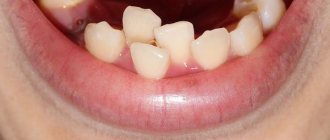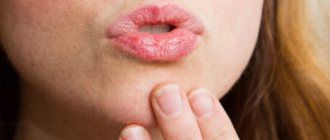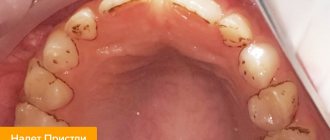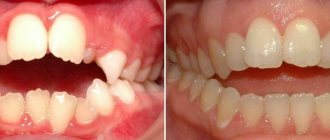- Why does snot run down the back of the throat?
- Symptoms of postnasal drip
- Complications of the syndrome
- How to remove nighttime mucus drainage
- Treatment of snot in the throat of a child
- Treatment of snot in the throat in an adult
When snot runs down the back of your throat, the condition is called postnasal drip or postnasal drip syndrome. Why does this condition occur and what are the complications?
Normally, a small amount of mucus is constantly present in the nasopharynx, which is produced by the exocrine glands. The mucus mixes with saliva and moves further into the digestive tract. Mucus is necessary to moisturize and cleanse the nasal cavity and nasopharynx from foreign substances that enter the respiratory tract with air. This process is absolutely physiological and does not cause any inconvenience. Discomfort occurs when the amount of mucus increases and its viscosity changes. Postnasal drip syndrome is a pathological condition and requires attention from a specialist.
Why does snot run down the back of the throat?
The pathology accompanies a number of ENT diseases. Possible reasons why snot runs down the back of the throat are:
- proliferation of adenoids;
- congenital anomalies of the structure of the mucous membrane of the posterior wall of the nasopharynx;
- deviated nasal septum;
- rhinosinusitis of various etiologies accounts for more than 50% of identified clinical cases;
- entry of a foreign body into the nasal cavity.
Women may experience the appearance of snot in the throat during pregnancy. A similar situation arises for people who work in hazardous industries or live in regions with poor ecology, or smokers. Chemical fumes, tobacco smoke, and particles of household chemicals entering the respiratory tract lead to irritation of the mucous membrane, so mucus production increases and snot flows into the throat.
The problem of leakage appears when taking certain medications. In particular, such a situation may be associated with the uncontrolled use of vasoconstrictor nasal drops. While the patient is using these medications, postnasal drip of mucus is observed. After discontinuation of the drug, mucus production normalizes and unpleasant symptoms disappear.
Some people experience snot running down their throats when the temperature and humidity change. When the microclimate is normalized, the human condition improves.
In some cases, the appearance of postnasal drip in adults and children is in no way associated with ENT diseases. The cause is pathology of the digestive organs, which is accompanied by gastroesophageal reflux. The contents of the stomach are regularly thrown into the esophagus, which causes belching, sore throat, and irritation of the mucous membrane. For this reason, mucus production increases and postnasal drip appears.
In some patients, this symptom is accompanied by endocrine pathologies leading to hormonal imbalance.
Main symptoms of the disease:
- Sore throat and pharynx;
- Bubbling in the neck area;
- Unreasonable cough.
They tend to disappear quickly, the person gradually calms down and the feeling of discomfort goes away.
Doctors distinguish several forms:
Anesthesia.
Symptoms - sensitivity in the throat area decreases or disappears, a person experiences difficulty swallowing saliva or food, there is tension in the area of the sternum, collarbones and larynx. The neurological reaction corresponds to that which occurs during hysteria. The patient has difficulty swallowing, there is a shortage of air, he tries to inhale more oxygen.
Hypesthesia
. The symptoms of hypoesthesia are similar to the symptoms of anesthesia, but the former are less pronounced. The sensitivity of the mucous membrane of the throat and pharynx is reduced, discomfort is felt during swallowing. If symptoms do not go away for a long time, this can lead to asphyxiation by ingested food or water.
Hyperesthesia.
A neurological symptom of this nature is accompanied by spasm and high sensitivity. A person with this type of neurosis complains of itching, burning in the throat and pharynx, and eating is difficult. Symptoms of nasopharyngeal neurosis are also present; the patient not only finds it difficult to speak, but also to breathe. Typically, hyperesthesia occurs immediately after stress.
Hyperalgesia.
This form has the following symptoms: regular pain in the throat, pharynx, thyroid gland. Eating and drinking intensifies the symptoms.
Paresthesia.
The symptoms of this form vary from patient to patient. They include the clinical picture of hyperesthesia (itching, sore throat). Patients feel large foreign objects in the throat, sometimes even complain about the absence of their esophagus. While eating, the sore throat intensifies and is accompanied by a headache. Symptoms are diagnosed in people with nervous disorders or those with a labile psyche. Laryngeal neurosis of the type paresthesia has been recorded in patients during menopause.
Additional symptoms may include:
- Dryness of the mucous membrane of the throat, saliva begins to be released in a smaller volume;
- Paroxysmal dry cough, which forces the patient to resort to cough medicines; the medicines relieve the patient’s condition for a short time or do not alleviate the patient’s condition at all;
- Feeling of a coma. The “presence” of a lump in the pharynx or throat forces a person to refuse food;
- Hoarseness of voice. Its changes provoke respiratory diseases. However, the symptom goes away within a few days, while in patients with throat neurosis it does not disappear, but persists for a month;
- Complete loss of voice. The symptom occurs after a hysterical attack;
- Imaginary swelling of the neck. Patients often feel their neck, looking for various “bumps” and thickenings on it.
How to remove nighttime mucus drainage
During the daytime, the clinical manifestations of the disease are less pronounced, since the body is in an upright position. The person simply swallows the bulk of the discharge. At night, when the body is in the “lying” position, mucus flows to the reflexogenic areas of the laryngopharynx. This irritates them and leads to severe coughing. For this reason, nighttime mucus discharge causes serious discomfort and interferes with normal rest.
To get rid of the problem, you need to identify its cause by contacting a specialist. The doctor may prescribe rinsing the nasal cavity, irrigating the nose with a spray with silver ions, or steam inhalation. You should also keep your sleeping area humid and drink plenty of fluids to help relieve postnasal drip at night.
Treatment of snot in the throat of a child
If postnasal drip occurs in a child, a consultation with an ENT doctor is required. The specialist assesses the condition of the upper respiratory tract, collects information about recent diseases, congenital or acquired anomalies of the upper respiratory system. Hardware diagnostic procedures include: rhinoscopy, mesopharyngoscopy, radiography or CT. This allows you to identify the cause that triggered the flow of mucus into the throat and determine how to treat postnasal drip. When identifying an inflammatory process, it is important to determine its cause. A general blood test helps with this. In bacterial infections, leukocytosis with increased ESR is observed. Viral infections lead to neutropenia and lymphocytosis. Allergic reactions are promoted by eosinophilia.
In most cases, the pathology can be eliminated with conservative therapy. If the cause is rhinitis or sinusitis, it is important to determine the nature of the rhinitis. For bacterial infections, antibiotics are indicated. If the inflammatory process is caused by a virus or allergen, symptomatic treatment is used. If snot runs down the back of the throat, antihistamines and corticosteroids may also be used for treatment. They help relieve swelling of the mucous membrane and thereby relieve symptoms.
For severe coughs, antitussive drugs are prescribed: expectorants and other drugs.
Why does mucus accumulate and can drain and smell in children?
Children's rhinitis is a common symptom of a cold, which very often affects the children's body. Such a symptom cannot be ignored, and to avoid the formation of serious complications, begin treatment immediately.
White
In young patients, when blowing their nose, parents discover white mucus. The reason for its formation lies in allergies. In addition to the fact that the mucus (or clot) is white, it is also viscous, viscous and can smell. The following reasons may influence the formation of allergies:
- pet fur;
- dust and very dry air;
- microorganisms that live in fleecy carpets or bedding.
To determine the exact cause of the allergy and the associated whitish nasal discharge, it is necessary for the baby to undergo a blood test. Then it will be possible to identify the allergen and prescribe it a course of antihistamine therapy.
How to properly use the sinusitis spray is indicated here.
Viscous
A poor environmental background can contribute to the accumulation of thick mucus. The baby's body actively produces mucus, which the nasal mucosa needs to prevent the negative effects of various microorganisms. The result of a large accumulation of bacteria and viruses is thick mucus. It is produced by mucin proteins and also consists of water and salt. It is this protein that is responsible for the consistency of nasal discharge. Most often, thick snot in a child is a sign of hypothermia and allergies.
You can read in detail about the use of a spray for allergic rhinitis in this material.
Green nasal discharge
The color of snot can indicate the stage and type of disease that caused it. Very often, parents begin to panic when the baby secretes green mucus. In fact, this is not a good sign, since it indicates the presence of a dangerous illness.
The following pathologies most often contribute to the release of green mucus:
- Purulent runny nose
. This disease is a complication of viral-type acute respiratory infections. Purulent rhinitis greatly weakens children's immunity, and these are ideal conditions for the development of a secondary bacterial infection. This condition cannot be cured with solutions and plenty of drinking alone, so parents should not allow the pathological process to develop. - Sinusitis
. In addition to the fact that green mucus is released from the nose, the baby’s sensitivity to taste buds decreases. The lesion can be caused not only to one, but also to both sides of the nasopharynx. The baby may have a fever, pain in the area of the affected sinus, pain in the head, which intensifies when the child takes a position lying on his back. - Frontit
. When the body is affected, the baby develops symptoms characteristic of sinusitis. The difference between these pathologies is that frontal sinusitis causes pain in the nasal sinus that is affected by the infection. - Ethmoiditis
. This disease can occur due to untimely treatment of rhinitis. The infection affects the paranasal sinuses, located in the ethmoid labyrinth. In addition to painful sensations, the baby may develop a fever, runny nose, and nasal congestion.
The link shows the causes and treatment of a sore throat.
Treatment of snot in the throat in an adult
Postnasal drip syndrome affects people of all ages. To find out how to get rid of snot in the throat, an adult patient also needs to consult an ENT doctor. The specialist will prescribe a set of examinations to identify the cause of the pathology and appropriate treatment.
What to do if the snot in the throat does not go away after taking medications? This situation may be caused by incorrectly selected therapy or structural abnormalities of the intranasal structures and paranasal sinuses. In this case, the doctor may choose a different conservative therapy regimen or recommend surgical treatment.
Patients with a deviated nasal septum undergo septoplasty. This is an endoscopic operation that is aimed at eliminating deformation of the nasal septum without changing the shape of the external nose. Thanks to this procedure, nasal breathing is restored and one of the main causes of rhinitis and sinusitis, which provoke postnasal drip, is eliminated.
If there are indications, the patient may undergo surgery to resect concha bullosa or remove a Thornwaldt cyst, a cyst-like formation in the nasopharynx. It causes postnasal drip, which is difficult to respond to conservative therapy. After the operation, the patient's condition usually returns to normal.
Without an examination, it is impossible to say how to treat snot in the throat, so this situation requires mandatory attention from specialists.
Accumulations of mucus in infants
Many mothers begin to worry when their baby develops mucus in the nasopharynx. For children of this age, this is a very common phenomenon, since their respiratory system is not yet fully formed. But sometimes such a symptom can actually indicate the presence of a certain disease.
Maybe








